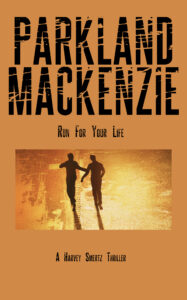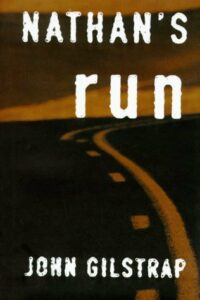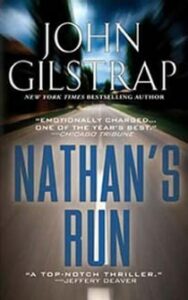by James Scott Bell
@jamesscottbell
 Sometimes it’s hard to believe that the Kindle made its appearance nearly twelve years ago. It ushered in the greatest boon to writers since Gutenberg—independent publishing. Not only did this sea change give new writers a way to get their work out to the world instantly; it also saved the careers of many midlist writers who were let go by their publishers due to lack of sales.
Sometimes it’s hard to believe that the Kindle made its appearance nearly twelve years ago. It ushered in the greatest boon to writers since Gutenberg—independent publishing. Not only did this sea change give new writers a way to get their work out to the world instantly; it also saved the careers of many midlist writers who were let go by their publishers due to lack of sales.
In those heady, early years a veritable Sargasso of sloppy mistakes were made by over-anxious newbies. Everything from lousy formatting to horrific covers (“But my daughter designed the cover for me, and by golly, I’m going to use it!”)
As the years rolled on, and blogs and books on indie publishing proliferated, quality issues slowly improved. That still did not guarantee huge sales numbers. You still had to write a good book! But we’ve now reached a point in indie publishing that I would call the “mature phase.”
Still, however, rookie mistakes are made by new writers. I’d like to point out three, and then turn the conversation over to you.
Cover Chaos
The other day I was browsing in the Kindle store when a cover popped out at me. Popped, but didn’t grab. I don’t want to embarrass the author, so I’ll just describe in general terms what it looked like.
The colors were fine, the fonts were good, the image — a small, shadowy figure — communicated thriller.
But the title did nothing for me. At least, what I thought was the title. For it turned out the title was a name. At first, I thought the name was that of the lead character, since it had a “title-like” font.
I should mention that the book cover was displayed in thumbnail form, which is significant because I then noticed, almost too small to read, something below the name.
It was the actual title.
And then, on the bottom of the cover: A ____ _____ Thriller.
Which meant, of course, that the font dominating the cover was the author’s name.
One little problem: this is the author’s first book. We’re not talking Lee Child here. We’re talking a rookie whom no one outside his immediate circle has ever heard of.
To give you an idea, I did a quickie mockup to show you the proportions. The names have been changed, of course.
As much of an ego boost as it is to see your name above the title, your first book is not the time to do it. Your task is to sell books and make repeat readers.
When might you put your name above the title?
a) When you hit a major bestseller list
b) When you win a major award
c) When your book sells a million copies
d) When you have established solid sales over four or five books.
Then you can move from this:
Not Paying for a Good Proofreader
I was teaching at a conference in Oklahoma recently, and took Lyft to the airport for the flight back to L.A. As I usually do, I engaged the driver in conversation. He was a local, a gray-haired ponytail fellow who goes around to fairs with a trio of guys reenacting Old West gunfights. He asked what I did and I told him and he said, “Hey, my buddy writes crime novels. He’s really into it. He’s written two of ’em.” Pause. “He needs an editor, though. A lot of mistakes and typos.”
“Uh-huh,” I said. “You can’t do that. At least if you want people to buy another one of your books.”
“I bought his second one,” my driver said, then added: “But only because he’s my buddy.”
You know all those potential readers out there? Not your buddies. So don’t annoy them with a typo infested book.
Typos are the special bane of the indie existence. I’ve often said they are like sand fleas. You get back from the beach, you shower, you think you’re good. Then around midnight, what’s that itch?
Yeah, ick, I know. But that’s how I feel about a typo that slips through.
So find a good proof reader and pay that person. It’s a rookie mistake not to invest in quality control.
And if there’s still a sand flea or two? Don’t worry. A reader will alert you. (Kindle Direct Publishing does, too.) Then you can fix and re-up your book in about ten minutes. I use Vellum for my formatting, so I make the change and then output for both ebook and print. I log into KDP and click a few times and I’m done.
Marketing Mayhem
As a rook, you’ll be tempted to try every dang thing under the sun to get the word out on your book. I’ve already written the wisest guide to marketing out there, one that will save you a lot of stress.
For now I’ll point out the two biggest blunders:
- Overlarding your social media with variations on: “I’ve got a book out there you should buy!” Follow the 90/10 rule. Ninety percent of your content should be positive and of some value to the reader. Ten percent you can hawk your books or alert to a deal.
- Letting social media overwhelm your actual writing. Remember, the best marketing by far is word-of-mouth, which comes only when you produce a great reading experience, time after time. So use most of your energy to study your craft and write your next book!
Have at it, folks. What other rookie mistakes have you seen? I’m at a conference today so my interaction may be sketchy. Talk amongst yourselves!




We seem to be on the same wavelength, JSB. I posted on this very topic at my blog a few days ago about the pitfalls of publishing too soon and not having editorial eyes on the manuscript first. I focused solely on dialogue in that post, but
there were so many other mistakes beyond the simple typo.
I picked up a bunch of promotional freebies, all by indie authors, for my vacation, and was appalled at the quality–or lack thereof. These rookie mistakes mean we indie authors who DO take the time and spend the money to put out quality work have to find ways to rise above the preconceptions that our work is automatically “inferior.”
Re: Cover Chaos and “We’re not talking Lee Child here.” …
Interesting. I happen to have in front of me the 2012 fourth edition of the trade paperback of Child’s first book (“Killing Floor”). As expected after all this time since the book’s 1997 appearance, the author’s name is huge, then comes “Reacher”, and finally the book title in teeny-tiny type. Then I searched online and found the very first cover of the book way back when. Sure enough: the title is big, the author name is small.
Thanks for the nod, Brother Bell. And greetings from Portugal!
Thanks for another great article…I can always use “tips for newbies”.
I heard a great speaker once. A Vietnam vet who had a great story to tell about being killed in a foxhole. Only he didn’t die. He’s a riveting speaker with a great sense of humor. (I have a tender spot for our veterans.)
I enjoyed him so much, I bought his book. The book is a more detailed version of his “killing”, then his resuscitation. And goes on to tell how it changed his life.
Let’s just say, he’s a great speaker. I literally could not get past the first page because of spelling, grammar, bad formatting, negligible paragraphing, etc. I haven’t picked up the book since. Just can’t do it. I did look at the front matter to see if an editor was mentioned. Nada. He wrote it, formatted it somehow, and just put it out there. I guess you get what you pay for. The best advice I ever received was “write your story and then give it to someone else to fix it-pay the professionals to edit, format, and design a cover”.
I’ll go anywhere to hear him speak, though. 🙂
Hi, Jim
One indie rookie mistake I see is simply assuming that an on-genre cover, a reasonably apt description, and correct categories are enough for a book that, inside, is badly written, slow moving, etc. Presentation is important, but what’s inside matters even more.
Another is one I was guilty of–over-marketing with ads and promotions early on. When you only have a single novel out, as I did back in February 2017, there’s only so much traction you can get, unless you are incredibly fortunate and lightning strikes. I released a prequel a week later, so I had two books out, and then the sequel two months later, but I likely still spent more money and time on marketing than was warranted even then with two novels out.
Have to chime in with one more rookie mistake I see a lot, and one I was guilty of–excessive expectations. It’s natural to dream of hitting a grand slam your first time at bat as an indie, but so important to temper those expectations. Be determined, be patient, and improve by staying in the game (and always learning, of course!).
You made my weekend by joining me for breakfast last Friday at one of my favorite places in San Antonio – MiTierras. You & Colleen Coble & her dear husband were such a pleasure. After all the years I’ve been with TKZ, I can’t believe we’ve never met. I’m glad we corrected that. I didn’t want our time to end. Safe travels, my fine friend.
Back atcha, Jordan!
I agree on all your points about copy editing and cover work. Also, great cover copy (the plot description/blurb) is a must. In recent years, I’ve been dissecting bad blurbs from self-pubs on my blog. Many are so poorly written that they make me swear with frustration. If you have a strong stomach, here’s a link:
http://mbyerly.blogspot.com/search/label/book%20blurb
The smartest and most successful method of promotion writers who write series use these days is offering the first book for free or a really low price through book promotion services. Link to list below. Also, group promotions through services like Bookfunnel which is much cheaper.
http://mbyerly.blogspot.com/2017/01/book-recommendation-services.html
Rookie mistake I’ve seen lately? I’ve seen a few (and hoping I’m saavy enough to not get caught in the trap).
First was a DM on Instagram to ask friends (aka me) to buy the book. No other social media presence, no marketing plan, no branding. Just… nothing. I love her to pieces, but why should I market her book to my writer/reader mates if she’s not going to take the time to market the book herself?
Second, not doing homework on publishers. Another first-timer friend said that he found a great publisher online. Not naming names, but suffice it to say, it was a vanity press. He had paid $3000 to publish his book and got really angry when it didn’t become a bestseller. He had invested “all this money” and he got nothing in return.
Third, using more than one font and one size. Yup; I’ve read a book like that. The author used four fonts per page in varying sizes. The book is amazing, once you get past the fonts… and it’s really hard to get past them, and the faux stream-of-consciousness, and the multiple ellipses per paragraph, and the bad grammar, bad spelling, and the non-existent punctuation. What made me persevere? Sheer stubbornness.
Fourth, uploading a first draft. I’m still scarred by some of the first drafts I’ve purchased from Amazon.
And the last, not sticking to genre conventions and obligatory scenes. Horror ceases to be horror when the killer lets his victim go because she’s just so darn cute. By all means, subvert and twist a trope (turn the girl he let go into a serial killer), but don’t out-and-out ignore it.
Have a great time at the convention!
I’d feel uncomfortable speaking about the mistakes of other indies when I struggle to overcome them myself.
My first big mistake was in thinking I had the skill to edit my own work. I do not. I’m good. I’m not great. If I intend to launch another book, I will certainly invest in professional help (if I can find it).
My second mistake, and some will argue that this no mistake, was writing a western. I love a good western and thought I might contribute to the genre. But I spent as much time doing research as I did writing, possibly more, to finish a book in a genre with very low sales numbers…. I’m thinking perhaps I should rewrite it and throw in a few sexy vampires (kidding).